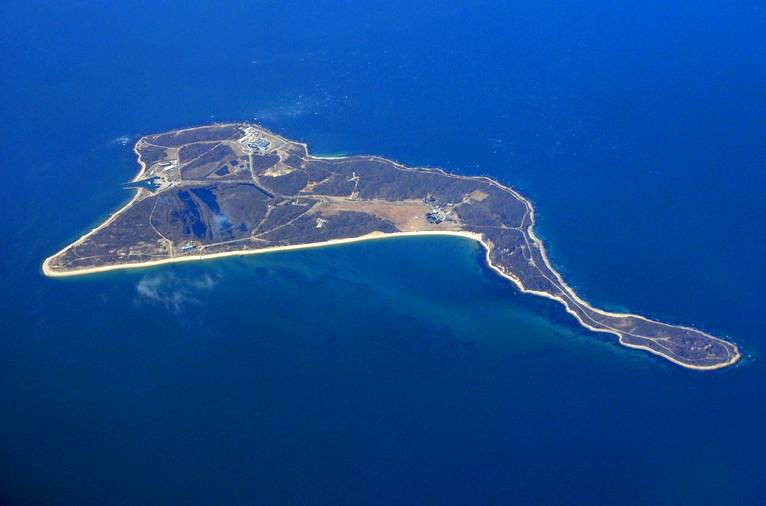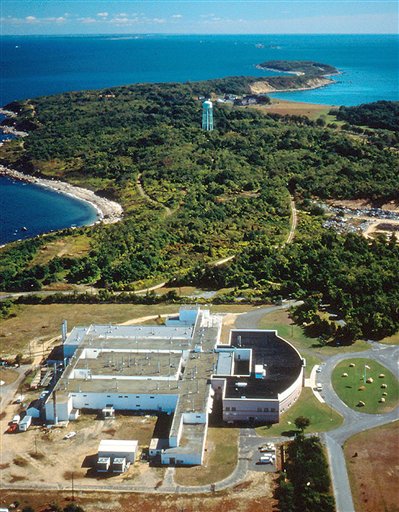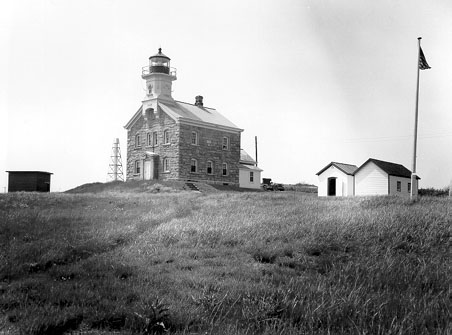Today, the U.S. General Services Administration released its Draft Environmental Impact Study for Plum Island, detailing what environmental impact a sale would have on the island. Unfortunately, in the report, the GSA still recommends a sale of the Island, despite the detrimental effect it would have on the natural habitat and wildlife that call Plum Island home.

Photo: Wikimedia Commons
In 2009, the U.S. Department of Homeland Security proposed selling Plum Island in order to relocate the Plum Island Animal Disease Center to Kansas.The center is a federal research facility dedicated to studying foreign animal diseases, such as foot-and-mouth disease and African swine fever, that could be introduced into the country in acts of agro-terrorism. It first opened in 1954 in response to disease outbreaks in Mexico and Canada.

Photo: Agricultural Research Service of the U.S. Department of Agriculture
However, the Plum Island Animal Disease Center occupies only a small portion of the 840-acre island located 1.5 miles off the northeast coast of Long Island and 10 miles from Connecticut. Almost 90 percent of Plum Island is made up of undisturbed lush wildlife habitat. The only developed parts include the Animal Disease Center, Plum Island Lighthouse, and Fort Terry army facility.

Photo: U.S. Coast Guard
Thanks to this undisturbed habitat, Plum Island is home to over one hundred species of birds, including two federally threatened species of birds, Piping Plovers and Roseate Terns, as well as Long Island’s largest seal colony.

Photo: Lloyd Spitalnik

Photo: Wikimedia Commons
In 2006, Plum Island and adjacent Great Gull and Little Gull Islands were identified for protection by the Long Island Sound Stewardship Initiative, which was endorsed by the Long Island Sound Study Management Committee and adopted and signed by the Policy Committee of the Long Island Sound Study, made up of the New York Department of Conservation’s Commissioner, Connecticut Department of Environmental Protection’s then-Commissioner Gina McCarthy, and the EPA Region I and II Administrators. Among the 33 Long Island Sound stewardship sites, the 2006 process identified Plum, Great Gull, and Little Gull Islands as possessing “exemplary” ecological value. Conservation of Plum Island was also identified as an action step as part of the Long Island Sound Study Citizen Advisory Committee’s SoundVision Action Plan.
Plum Island has received several other important designations by state and national organizations, including:
- Important Bird Area – Audubon New York
- Critical Natural Resource Area – U.S. Fish and Wildlife Service
- Peconic Bay Environs Critical Environmental Area – Suffolk County, NY
- Coastal Significant Fish and Wildlife Habitat – NYS Department of State
In 2010, Save the Sound organized a site visit to Plum Island with key allies to see the island first hand and gain a better understanding of the types of natural resources at stake. That same year, we submitted comments to GSA urging them to consider an alternative to auctioning off the Island to the highest bidder that would allow for the undisturbed habitats to be preserved.
Moving forward with a sale of Plum Island without providing for conservation of the undeveloped parts of the Island is irresponsible. That is why we are so disappointed in GSA’s recommendation to sell Plum Island. Sale of the Island would disrupt these pristine habitats and put already threatened species at risk. Below is the statement we put out today regarding GSA’s recommendation:
“GSA’s recommendation that Plum Island be auctioned off to the highest bidder – without conditions that conserve valuable habitat – runs counter to the demonstrated governmental interests in preserving this unique Long Island Sound gem. For over two years, we have worked with our sister environmental organizations and state and federal agencies to offer data and conservation options that would protect the significant ecological assets of Plum Island. While the DEIS mentions conservation opportunities as a part of its alternatives analysis, it abdicates responsibility for establishing conditions for any sale based on the findings of these alternatives. Instead, it chooses to foist that burden onto New York state and local authorities once a full-scale development is threatened.”
GSA is accepting comments on the DEIS from now until September 18, 2012. Hard copies of the DEIS are available at two public libraries – Southold Free Library in New York and Acton Public Library in Old Saybrook, Connecticut. There will also be two public meetings held in Connecticut and New York in September on the DEIS. We encourage everyone to submit comments on the Draft Environmental Impact Statement urging GSA to reconsider their recommendation and include a provision for permanent conservation protection and appropriate public use for the undeveloped portion of the Island.
Information on where to submit comments on the Plum Island DEIS is available here.
Posted by Rebecca Kaplan, director of communications for CFE/Save the Sound

Long Island has been stripped of life enough. Save some of nature and don’t destroy anymore wildlife !
“Federal Government Must Protect Plum Island | Green
Cities Blue Waters” was in fact a terrific blog, cannot
help but wait to browse even more of ur blog posts.
Time to waste some time on-line hehe. Thanks for your time -Brittany